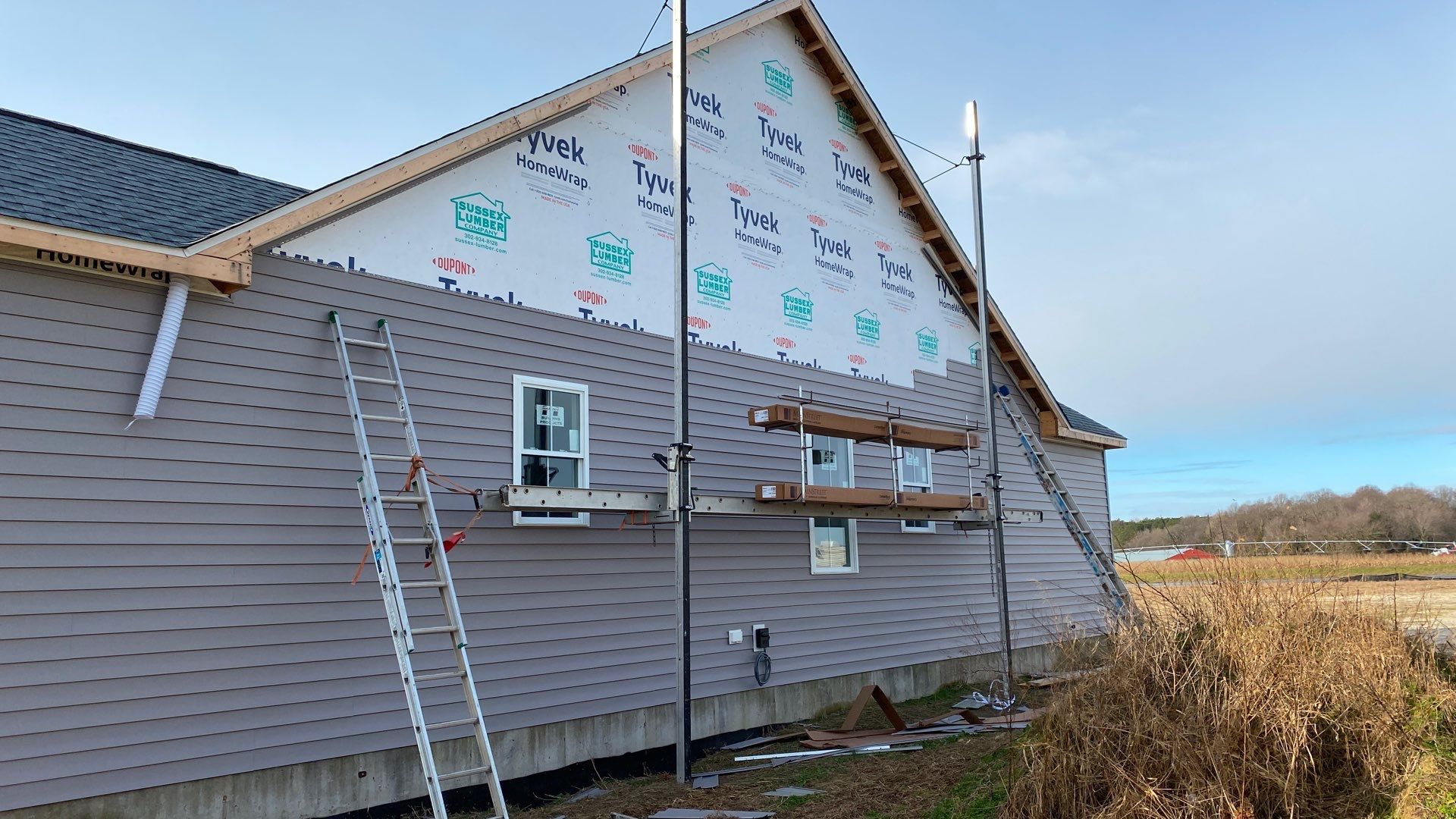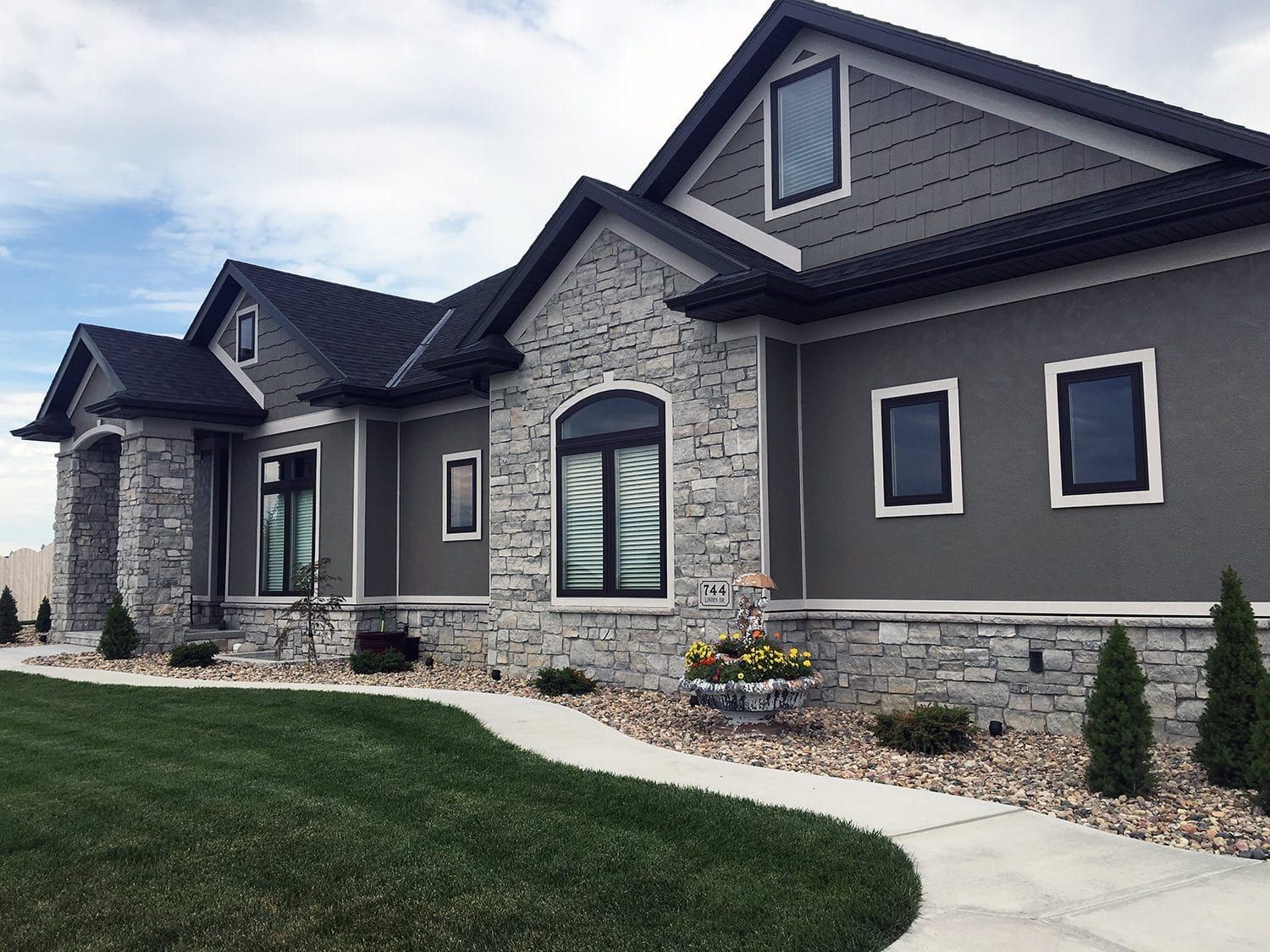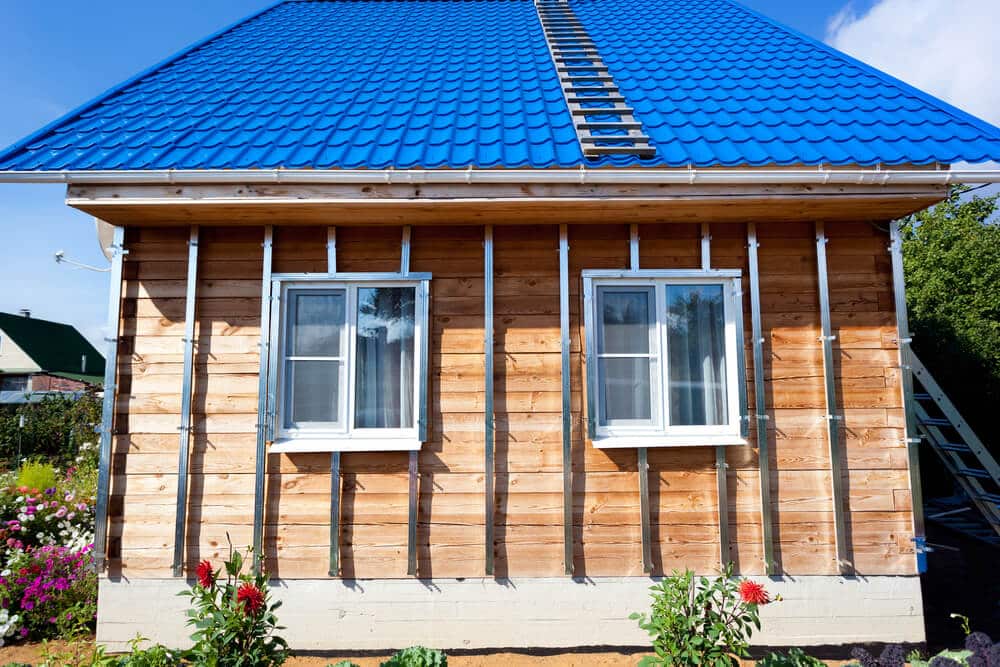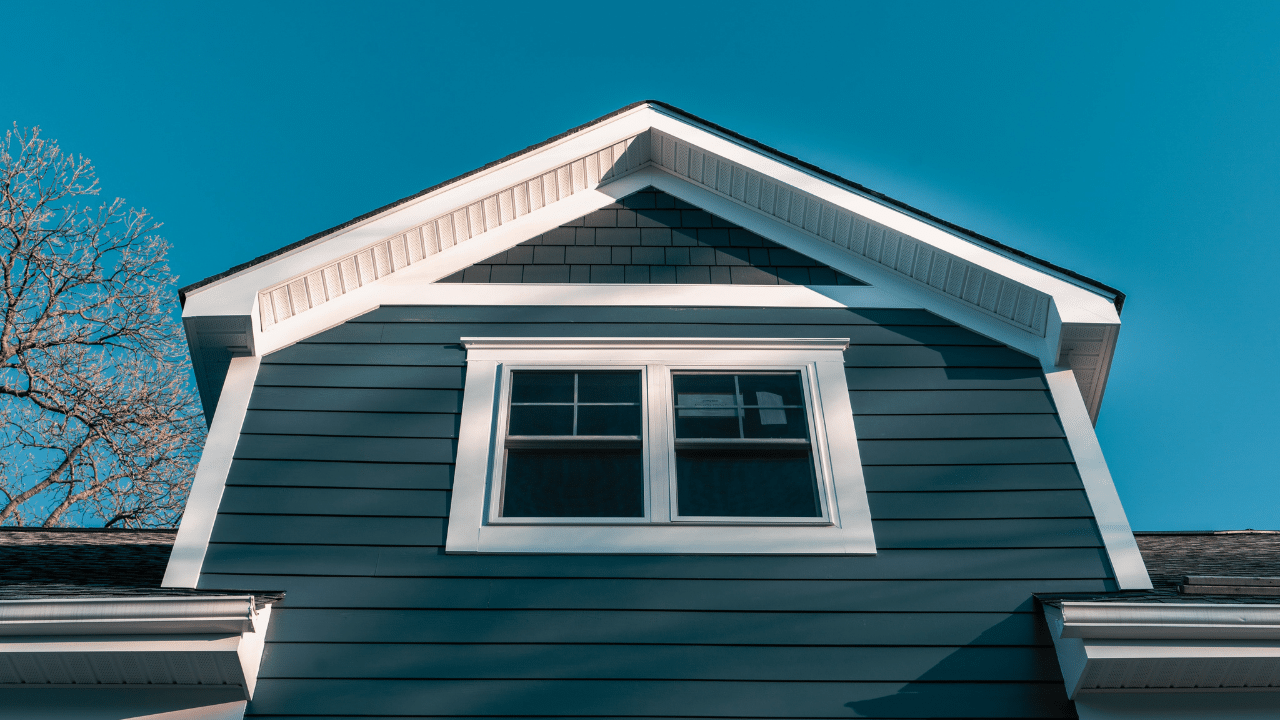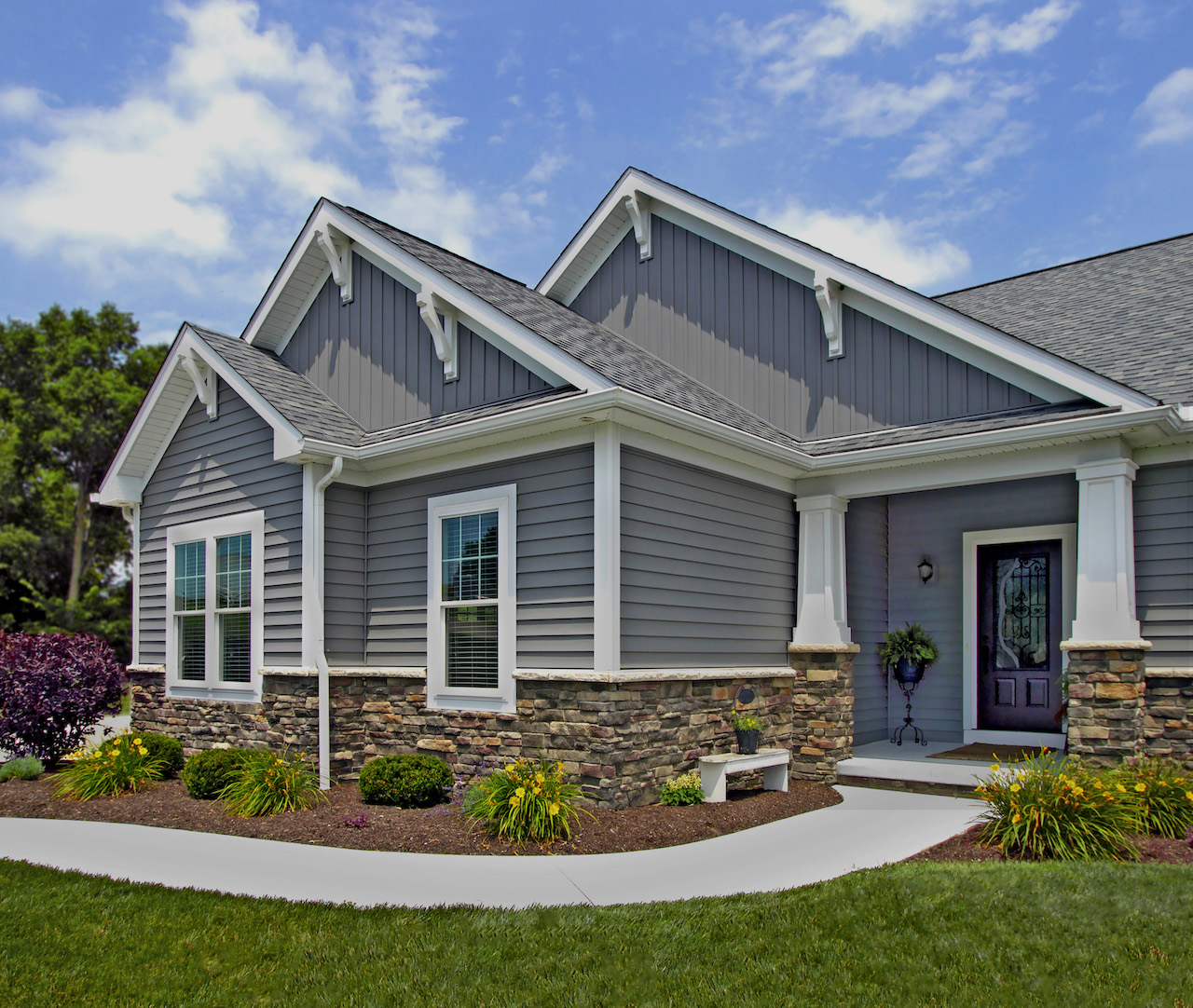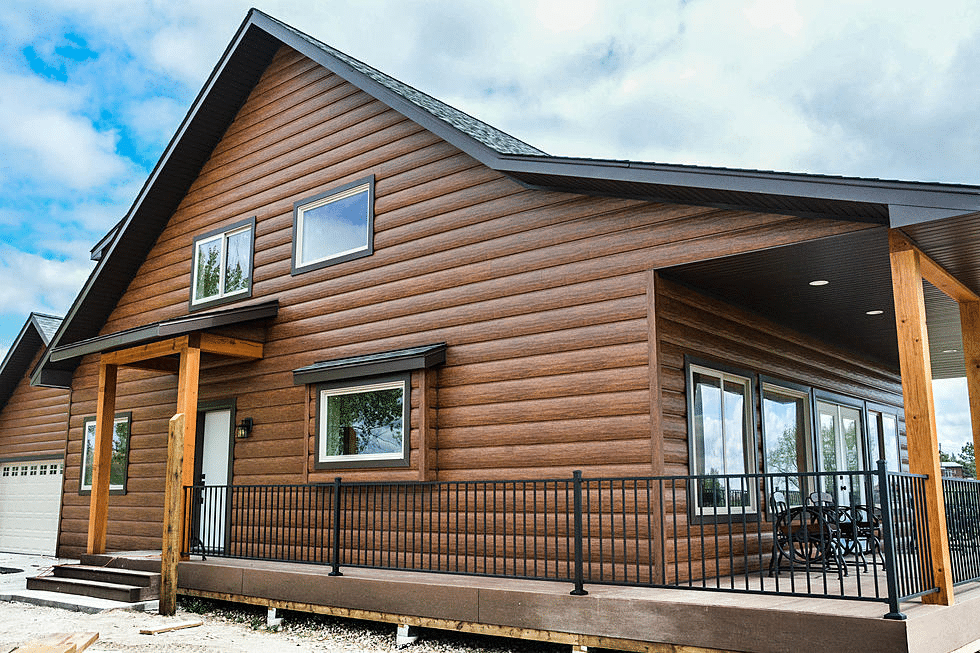Best Siding for Cold Climates
Best siding for cold climates? It’s more than just aesthetics; it’s about protecting your home from the harsh realities of freezing temperatures, snow, and ice. Choosing the right siding means considering factors like insulation, moisture resistance, durability, and cost. This guide dives into the specifics, helping you make an informed decision that keeps your home comfortable and beautiful for years to come.
From the thermal performance of various materials to the crucial aspects of installation and long-term maintenance, we’ll explore the key considerations for selecting the best siding to withstand the challenges of a cold climate. We’ll compare vinyl, fiber cement, wood, and metal siding, examining their strengths and weaknesses in detail. We’ll also touch upon the aesthetic aspects, showing how siding can enhance your home’s curb appeal even in the harshest winter landscapes.
Material Properties for Cold Climate Siding
Choosing the right siding for a cold climate requires careful consideration of material properties that ensure durability, energy efficiency, and low maintenance. Factors like thermal performance, moisture resistance, and lifespan are crucial in protecting your home from the harsh elements of winter.
Thermal Performance of Siding Materials
Different siding materials offer varying levels of thermal insulation. This is often expressed as an R-value, which represents the material’s resistance to heat flow. Higher R-values indicate better insulation. While siding itself doesn’t provide the primary insulation for a home (that’s the job of wall insulation), it contributes to the overall thermal envelope and can reduce heat loss. Precise R-values can vary based on the specific product and its thickness. However, general comparisons can be made:
| Siding Material | Approximate R-Value per Inch | Insulation Properties |
|---|---|---|
| Vinyl | 0.00-0.05 | Minimal insulation; relies primarily on the wall’s insulation. |
| Fiber Cement | 0.08-0.10 | Slightly better insulation than vinyl, but still minimal compared to other options. |
| Wood | 0.90-1.25 | Significantly better insulation than vinyl or fiber cement. |
| Metal (Steel, Aluminum) | 0.00-0.02 | Very poor insulator; prone to thermal bridging (heat transfer). |
Moisture Absorption and Freeze-Thaw Cycles
The impact of moisture absorption on siding in cold climates is significant. Freezing and thawing cycles can cause significant damage, particularly to materials that absorb water. Water expands when it freezes, putting stress on the siding material and potentially leading to cracking, warping, or deterioration.
| Siding Material | Moisture Absorption | Impact of Freeze-Thaw Cycles |
|---|---|---|
| Vinyl | Low | Generally resistant to damage from freeze-thaw cycles. |
| Fiber Cement | Low | Relatively resistant, but prolonged exposure to moisture can lead to cracking over time. |
| Wood | High | Susceptible to rot, warping, and cracking due to freeze-thaw cycles. Requires regular maintenance and protective coatings. |
| Metal | Negligible | Not directly affected by freeze-thaw cycles; however, moisture can lead to corrosion, especially with steel. |
Lifespan and Maintenance of Siding Materials
The lifespan and maintenance requirements of siding materials vary considerably, particularly in harsh winter conditions.
| Siding Material | Typical Lifespan (Years) | Maintenance Requirements | Cost of Maintenance |
|---|---|---|---|
| Vinyl | 30-50 | Low; occasional cleaning. | Low |
| Fiber Cement | 50-80 | Moderate; occasional cleaning, repainting may be needed. | Moderate |
| Wood | 20-40 (with maintenance) | High; regular painting, staining, and repair. | High |
| Metal | 50-75 | Low to Moderate; occasional cleaning, potential for repainting depending on material and finish. | Low to Moderate |
Siding Installation Techniques for Cold Climates
Proper siding installation is crucial in cold climates to prevent costly damage from water intrusion, ice damming, and heat loss. Neglecting these techniques can lead to structural issues, mold growth, and significantly increased energy bills. This section details best practices for ensuring a durable and energy-efficient exterior.
Flashing and Sealing Techniques
Effective flashing and sealing are paramount to preventing water from penetrating the building envelope. Water intrusion can lead to rot, mold, and structural damage, particularly in freezing temperatures where water expands and causes cracking. Proper flashing directs water away from vulnerable areas, while sealant creates a waterproof barrier.
Flashing should be installed at all intersections and transitions, such as around windows, doors, chimneys, and rooflines. It should be made of a durable, corrosion-resistant material like galvanized steel or aluminum, and overlap sufficiently to prevent water from getting behind it. The flashing should extend beyond the siding and be properly sloped to guide water away from the building. Sealants should be weatherproof and flexible to accommodate thermal expansion and contraction. Silicone-based sealants are often preferred for their durability and adhesion in cold temperatures.
For example, around a window, flashing should be installed under the window sill, wrapping up the sides and over the top. Sealant should be applied between the flashing and the window frame, and between the siding and the flashing to create a complete seal. Similar techniques should be applied to other areas prone to water intrusion.
Siding Installation Around Windows and Doors
Installing siding around windows and doors requires meticulous attention to detail to minimize heat loss and prevent air infiltration. Proper installation involves using expansion foam or other insulation materials to fill gaps between the framing and siding. This minimizes drafts and helps maintain a consistent indoor temperature.
Imagine a cross-section of a window. First, you’d see the window frame, then a layer of insulation filling the gap between the frame and the exterior wall. Next comes a layer of weather resistant membrane, followed by the flashing. The siding is then installed over the flashing, ensuring a tight seal around the window frame. Caulk should be applied between the siding and the window frame to further prevent air leakage.
A similar approach is used around doors. Air infiltration around doors is a major source of heat loss, so a tight seal is essential. This involves using weatherstripping, door sweeps, and proper installation techniques to ensure the door frame and siding create a continuous barrier.
Fastener Selection for Extreme Temperatures
Choosing the right fasteners is critical for maintaining the integrity of the siding system in extreme cold. Fasteners should be strong enough to withstand wind loads and thermal expansion and contraction, while also being resistant to corrosion and damage from freezing temperatures.
- Stainless Steel Fasteners: Offer excellent corrosion resistance and strength, making them a suitable choice for most siding materials in cold climates.
- Hot-Dipped Galvanized Fasteners: Provide good corrosion protection and are generally more affordable than stainless steel fasteners. However, they may not be as resistant to extreme cold as stainless steel.
- Aluminum Fasteners: Lightweight and corrosion-resistant, but may not be as strong as stainless steel or galvanized fasteners, especially in high-wind areas.
- Fastener Length: Always use fasteners long enough to penetrate the sheathing and provide adequate holding power. The length will depend on the siding material and the thickness of the sheathing.
The type of fastener used will also depend on the type of siding. For instance, thicker siding materials may require longer fasteners than thinner materials. Always consult the manufacturer’s instructions for specific recommendations on fastener type and length.
Impact of Climate Conditions on Siding Choices
Choosing the right siding for a cold climate requires careful consideration of how various weather conditions will affect its performance and longevity. Factors such as heavy snowfall, strong winds, extreme temperature fluctuations, and ice accumulation all play a significant role in determining which siding material is best suited for a particular location. Understanding these impacts is crucial for ensuring a durable and aesthetically pleasing exterior for your home.
Extreme temperature swings and harsh weather events can significantly impact the performance and lifespan of different siding materials. Materials that perform exceptionally well in one area may struggle in another. The following sections detail these effects.
Heavy Snowfall and Wind Loads
Heavy snowfall and strong winds pose significant challenges to siding in cold climates. The weight of accumulated snow can stress siding, leading to damage, particularly on less robust materials. For example, vinyl siding, while affordable and low-maintenance, can be susceptible to damage from heavy snow loads, especially if improperly installed or if the snow is wet and heavy. Fiber cement siding, on the other hand, is much more durable and resistant to snow damage due to its strength and density. Similarly, strong winds can exert considerable pressure on siding, potentially causing damage or leading to detachment. Materials with a higher wind resistance rating, such as certain types of metal siding, are better equipped to withstand these forces. The design of the siding installation itself, including proper fastening and flashing, also plays a crucial role in mitigating the risks associated with wind and snow.
Ice Accumulation and Moisture Buildup
Ice accumulation can cause significant damage to siding, particularly if water seeps behind it and freezes. This process of freeze-thaw cycling can lead to cracking, warping, and even detachment of the siding. Materials with good water resistance and drainage properties are essential in mitigating this risk. For instance, properly installed cedar wood siding, with its natural ability to shed water, can be a good choice, though regular maintenance is required. Conversely, siding materials with poor drainage, such as some types of vinyl, can trap moisture, increasing the likelihood of ice damage. Proper installation techniques, including the use of flashing and weep holes, are crucial to prevent moisture buildup behind the siding.
Thermal Expansion and Contraction
Extreme temperature fluctuations between winter’s frigid temperatures and summer’s heat cause siding materials to expand and contract. This cyclical process can lead to cracking, warping, and failure over time if the material isn’t chosen carefully or isn’t installed correctly. For instance, vinyl siding, known for its flexibility, can handle some expansion and contraction. However, excessive temperature swings can still cause it to warp or crack, particularly in areas with large temperature differences. Metal siding, while strong, also expands and contracts with temperature changes, though its impact may be less noticeable due to its durability. Proper installation, including the use of expansion joints, is critical for accommodating this movement and preventing damage. Consider the coefficient of thermal expansion (CTE) for different materials when making your selection. A lower CTE indicates less expansion and contraction with temperature changes.
Ventilation Behind Siding
Proper ventilation behind siding is paramount in cold climates to prevent moisture buildup and ice formation. Without adequate ventilation, trapped moisture can freeze and expand, leading to damage to the siding and underlying structure. This is especially important in areas with high humidity levels or where snowmelt can seep behind the siding. Effective ventilation systems allow for air circulation, preventing moisture from accumulating and facilitating the drying of any moisture that does penetrate. Proper installation techniques, such as ensuring sufficient gaps between the siding and the wall sheathing and using vented housewrap, are crucial for effective ventilation. Without proper ventilation, ice dams can form on the roof, leading to leaks and water damage, potentially compromising the integrity of the entire wall system.
Cost Considerations and Long-Term Value
Choosing siding for a cold climate involves a careful balancing act between upfront costs and long-term savings. While initial investment might vary significantly depending on the material, the true cost picture emerges when factoring in maintenance, energy efficiency, and the siding’s lifespan. Understanding these factors is crucial for making a financially sound decision.
Different siding materials present varying initial costs and long-term maintenance requirements. For example, while vinyl siding boasts a relatively low upfront cost, it may require more frequent repairs or replacements compared to more durable options like fiber cement or engineered wood. Conversely, materials like brick or stone have high initial costs but offer exceptional longevity and minimal maintenance, ultimately proving cost-effective over the long run. Let’s delve into a detailed comparison.
Siding Material Cost Comparison
The table below compares the approximate initial cost and long-term maintenance expenses for several common siding options in cold climates. Note that these are estimates and can vary based on factors like location, labor costs, and the complexity of the installation.
| Siding Material | Initial Cost (per sq ft) | Annual Maintenance Cost (per sq ft) | Lifespan (Years) |
|---|---|---|---|
| Vinyl | $3-$7 | $0.10-$0.50 | 20-40 |
| Fiber Cement | $8-$15 | $0.05-$0.20 | 50-80 |
| Engineered Wood | $6-$12 | $0.15-$0.75 | 30-50 |
| Brick | $15-$30+ | $0.01-$0.10 | 100+ |
| Stone | $20-$40+ | $0.01-$0.10 | 100+ |
Factors Influencing Overall Siding Installation Cost
The total cost of siding installation in a cold climate extends beyond just the material price. Several other factors significantly impact the final expense. These include:
- Labor Costs: Labor costs vary widely depending on location, the contractor’s experience, and the complexity of the project. Cold climates can sometimes increase labor costs due to weather-related delays and the need for specialized techniques.
- Material Preparation and Delivery: The cost of preparing materials for installation, including cutting, pre-treating, and transporting them to the job site, can add to the overall expense. In remote areas or during harsh weather, these costs can escalate.
- Site Preparation: Proper site preparation, such as removing old siding, repairing underlying sheathing, and ensuring proper ventilation, is crucial for a successful installation. This preparation work adds to the total cost.
- Permits and Inspections: Obtaining necessary building permits and scheduling inspections adds another layer of expense to the project. These costs vary depending on local regulations.
- Additional Features: Adding features like trim, flashing, or insulation further increases the overall cost. These additions can enhance both the aesthetic appeal and energy efficiency of the siding.
Long-Term Value and Return on Investment
Investing in durable and energy-efficient siding offers significant long-term value and a substantial return on investment. Energy-efficient siding reduces heating and cooling costs, leading to significant savings over the lifespan of the siding. For instance, a home in a cold climate with well-insulated siding might see a 10-20% reduction in energy bills annually, representing a considerable return on the initial investment. Furthermore, durable siding requires less frequent repairs and replacements, further reducing long-term expenses. Choosing high-quality, long-lasting siding can also increase a home’s resale value.
Aesthetic Considerations and Design Choices
Choosing the right siding not only protects your home from the harsh realities of a cold climate but also significantly impacts its overall aesthetic appeal. The interplay of material, color, texture, and style can transform a house from ordinary to extraordinary, enhancing curb appeal and property value. Careful consideration of these factors is crucial for creating a visually stunning and cohesive home design.
The visual impact of siding extends beyond mere protection; it’s a powerful tool for shaping the personality and character of your home. Different materials offer unique textural qualities, from the smooth, clean lines of fiber cement to the rustic charm of wood or the modern sleekness of vinyl. Color choices further amplify this effect, influencing the mood and ambiance of the exterior. Darker colors can create a sense of drama and sophistication, while lighter shades can impart a feeling of airiness and openness. The texture, whether smooth, rough, or patterned, adds another layer of visual interest, influencing how light and shadow play across the surface.
Siding Material and Color Enhancements
The selection of siding material directly influences the overall aesthetic. For example, natural wood siding offers a timeless, rustic appeal, particularly well-suited to traditional or craftsman-style homes in cold climates. Its inherent variations in grain and color create a warm, inviting façade. In contrast, fiber cement siding, with its clean lines and ability to mimic the look of wood, offers a low-maintenance alternative with a modern, sophisticated feel. Vinyl siding, known for its affordability and durability, provides a wide range of color and style options, allowing for customization to suit various architectural preferences. Stone or brick siding, while more expensive, creates a robust and stately look, particularly effective for homes with a more formal or historical design. Color plays a crucial role; for instance, a deep, earthy tone like charcoal gray can complement a modern farmhouse, while a soft, muted blue can enhance a coastal-inspired home.
Siding Designs for Different Architectural Styles
The choice of siding should complement the architectural style of the home.
- Traditional/Craftsman Style: Natural wood siding, often with vertical or horizontal lap patterns, is a classic choice. Earth tones like browns, greens, and creams create a cohesive look. Consider adding decorative trim and accents to further enhance the style.
- Modern/Contemporary Style: Clean lines and minimalist designs are key. Fiber cement siding in neutral colors like gray or white, with smooth or subtly textured surfaces, works well. Large panels or horizontal siding can further emphasize the modern aesthetic.
- Farmhouse Style: Vertical shiplap siding, often in white or light gray, creates a charming and rustic appeal. Accents of darker colors, such as black or navy, can be used on trim or window frames to add visual interest. Consider incorporating stone or brick accents for a more grounded look.
- Victorian Style: A variety of siding materials can be used, often incorporating intricate details and patterns. Wood siding, possibly with decorative trim and multiple colors, can create a rich and ornate effect. A combination of materials, such as wood and stucco, can also be used to achieve a more complex and visually interesting design.
Siding and Landscape Integration
Siding should harmonize with the surrounding landscape and the overall design of the home. The color palette of the siding should complement the colors of the landscape, such as the surrounding trees, foliage, and rocks. For example, a home nestled in a wooded area might benefit from earth-toned siding that blends seamlessly with its environment. Conversely, a home situated near a body of water might look stunning with siding in shades of blue or green that echo the natural surroundings. The texture of the siding can also play a role in creating a cohesive design. Rough-textured siding might work well with a landscape that includes rocks and natural elements, while smooth siding might be more appropriate for a manicured, formal garden. The careful consideration of these factors ensures that the home’s exterior design complements and enhances its natural setting.
Last Recap
Ultimately, selecting the best siding for a cold climate involves a careful balancing act between material properties, installation techniques, long-term cost, and aesthetic preferences. By understanding the unique challenges posed by freezing temperatures, snow, and ice, and by carefully considering the various options available, homeowners can make a well-informed choice that protects their investment and enhances the beauty of their home for many years. Remember to factor in your budget, local climate specifics, and personal style to achieve the perfect blend of functionality and aesthetics.



